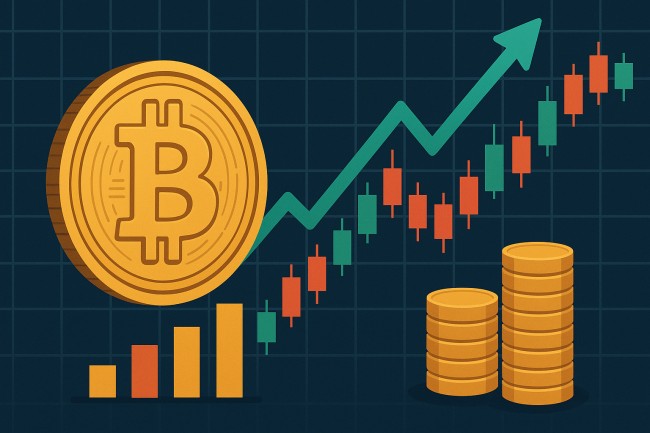As Bitcoin continues to reverberate throughout global marketplaces, software for monitoring prices continues to evolve at truly breakneck speed. Traders and developers are considering more and more advanced solutions to keep up in the ever-more algorithm-reliant realm.
Real-time intelligence has become a real necessity rather than a luxury in a world where digital assets trade around the clock. Investors are no longer satisfied with simple candlestick charts or hourly averages.
The demand for intelligent, adaptive tools has reshaped how traders monitor movements and respond. Today, a bitcoin price tracker offers far more than it did even a few years ago, reflecting the technological leap forward in financial analytics.
How Artificial Intelligence is Revolutionizing Bitcoin Price Forecasts
The introduction of artificial intelligence in Bitcoin trading platforms has been no less than a revolution. No longer restricted by the limitations of linear assessment of trends, AI-based systems can now decipher market sentiment, observe subtle behavior patterns and forecast in real time.
Thousands of variables rigorously train these platforms, such as social trends, macroeconomic variables and history of past performance, to make wise recommendations about future price movement.
This machine learning-based approach provides a significant benefit. For the average trader and especially those trading in volatile environments, AI brings speed together with precision.
More importantly, it removes the emotional bias characteristic of human judgment from the equation. As the systems continue to evolve, their ability to provide high-probability signals will play an even more substantial role in institutional and retail strategies.
The Evolution of Crypto Tracking Tools
Legacy charts aren’t disappearing, but they’re no longer standalone, independent entities, as much larger-scale, user-editable dashboards are replacing them.
These platforms draw data from all sorts of places such as Blockchain activity, trade volume, price differentials between exchanges and graph it in real time. This shift from observing to acting allows individuals to act more rapidly and more decisively.
Unlike the last generation of trackers, user interfaces today contain user-selectable alerts, multi-level technical indicators and performance simulations. They can be tailored to personal risk tolerances or strategy types, so the entire interface feels customized.
As the adoption of smart devices continues, the ability to maintain such high degrees of analytical capability in smartphones and tablets once again increases usability among global users.
On-Chain Analytics and Real-Time Data
One of the major breakthroughs in crypto price monitoring is the utilization of on-chain data. While in conventional finance, knowledge only reaches as far as publicly published reports, blockchain-based currencies such as Bitcoin give us clear, easily accessed records of transactions and wallet movements.
This transparency makes it possible to do very deep, real-time market analysis that can be easily incorporated into price monitoring software.
Traders nowadays analyze variables such as trade volume, active addresses and miner activity to predict movements. These signals, graphed alongside price charts, provide much-needed perspective to previously unexplained movements.
This blending of on-chain data and real-time feedback allows for wiser, quicker decisions and renders price trackers much more informative than ever before.
APIs, Bots and Automation
Central to the majority of successful trading systems is a collection of bots and APIs that automate the execution and decision-making.
Advanced price monitors of bitcoin often include available APIs as a standard, allowing the user to build custom tools or connect to automated trading bots. This configuration allows strategies to be able to respond to shifts in the market in milliseconds, faster than would be feasible for a human.
Automation also facilitates more nuanced risk management. Instead of entering and adjusting trades manually, users can set dynamic stop-losses or multi-level entry points based on market activity.
As decentralized trading protocols and low-latency APIs get more developed, automation becomes less of a convenience and more of a necessity.
What’s Next for Bitcoin Price Tracking?
In the future, the combination of predictive modeling and machine learning will have the most extreme impact on Bitcoin’s price monitoring. These systems do not simply respond to market movements; they forecast them.
By analyzing past data and including real-time analytics, predictive models can forecast likely price ranges, volatility shocks, or even liquidity shortages beforehand.
This innovation becomes all the more worthwhile in cross-border markets, where local news or policy changes can rapidly change sentiment.
The more data-intensive and contextual machine learning becomes, the more foresight it will give, not only in the price but also in market psychology. That’s a substantial leap from reactive to proactive trading methodology.
Intelligent Tools for Intelligent Strategies
Bitcoin price tracking development is not a technological revolution; it’s a revolution in how institutions and individuals manage crypto market engagement.
It varies from AI-based analysis, blockchain-based controls and automation, as the contemporary tools allow the user to trade through intelligence, agility and planning.
As more of the global population becomes active in crypto markets, the need for more intelligent, more responsive tracking will escalate accordingly.
By adopting these advances, traders aren’t merely keeping up but getting ahead of the curve of the future of finance as they know it. The figures still add up, but the environment around them becomes the real differentiator.
Also Read:
